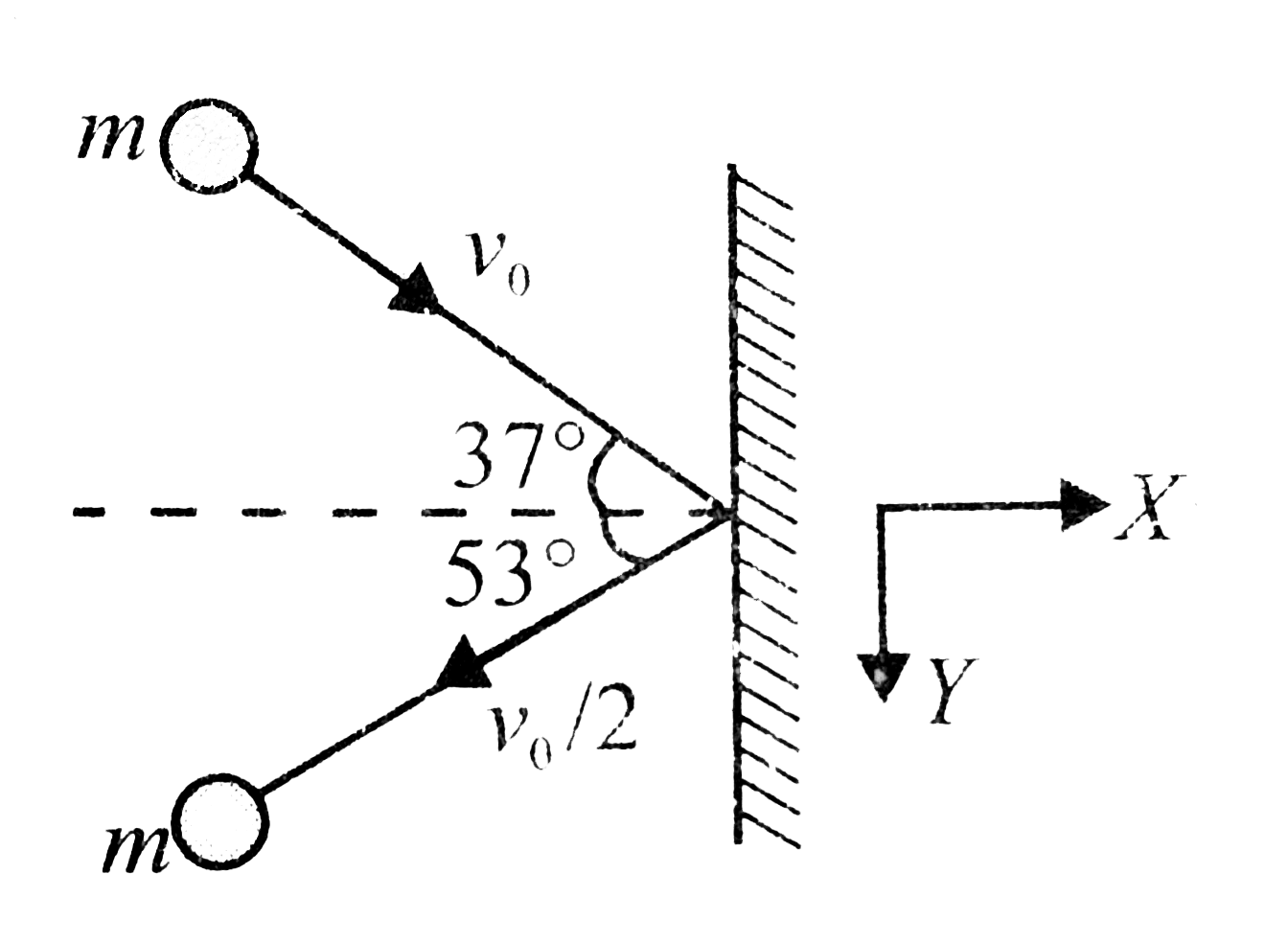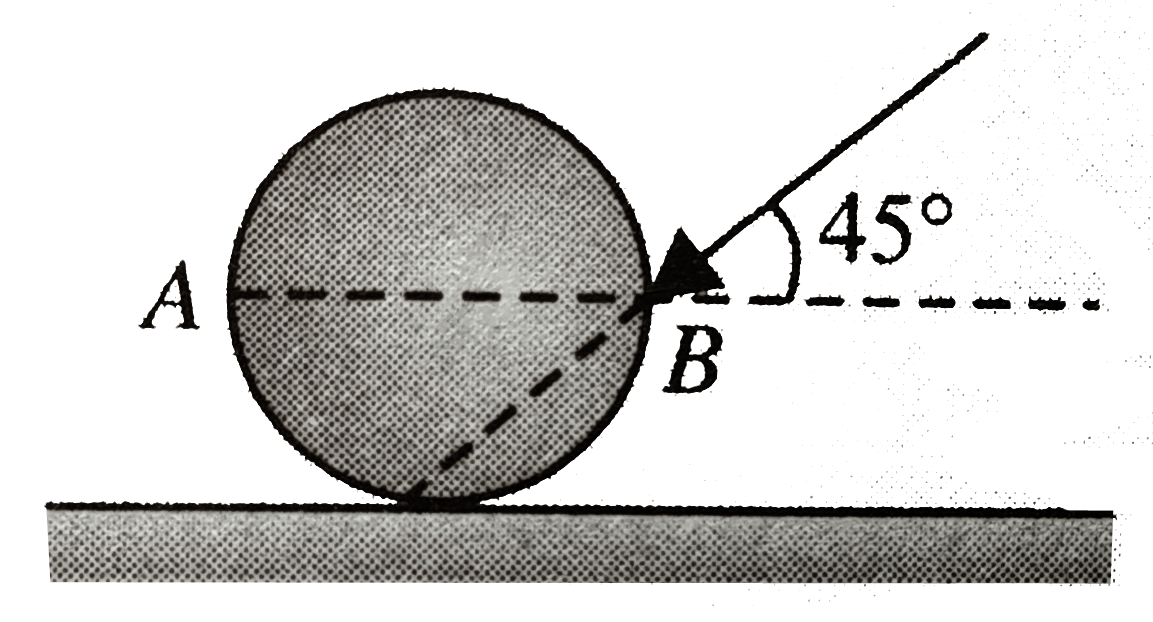A billiard ball is struck by a cue when it starts moving with velocity v0 without rolling. How far will the ball move before it ceases to slide on the table if μ is the coefficient of friction between ball and table?
The correct Answer is:1249v20μg
Step by step video, text & image solution for A billiard ball is struck by a cue when it starts moving with velocity v_(0) without rolling. How far will the ball move before it ceases to slide on the table if mu is the coefficient of friction between ball and table? by Physics experts to help you in doubts & scoring excellent marks in Class 11 exams.
Topper's Solved these Questions
- BOOK - NN GHOSHCHAPTER - ROTATIONAL DYNAMICS, MOMENT OF INERTIAEXERCISE - Exercises42videos
ROTATIONAL DYNAMICS, MOMENT OF INERTIA
- BOOK - NN GHOSHCHAPTER - MOMENT, TORQUE, EQUILIBRIUM OF BODIESEXERCISE - Exercises33videos
MOMENT, TORQUE, EQUILIBRIUM OF BODIES
- BOOK - NN GHOSHCHAPTER - SATURATED AND UNSATURATED VAPOUREXERCISE - All Questions1videos
SATURATED AND UNSATURATED VAPOUR
Similar Questions
A ball is in rest. When it is pushed, why it starts moving?
View SolutionA billiard ball is struck by a cue. The line of action of the applied impulse is horizontal andpasses through thecentre of theball. The initial velocityofthe ball is v0. If is the radius, M is the mass of the ball and μ is the coefficient of friction between the ball and the floor, find how far the ball moves before it ceases to slip on the floor.
View Solution
Knowledge Check
- Question 1 - Select One

A board is moving with velocity v on a smoother horizontal plane. The upper surface of the board is rough on which a ball falls with velocity v and rebounds with velocity v2. The mass of the board is same as that of ball. After the collision, the board comes to state of rest. The co-efficient of friction between the board and the ball isA12B23C14D35 - Question 2 - Select One
A ball of mass m moving with velocity v0 collides with a wall as shown in Fig. After impact it rebounds with a velocity' (v0)/2The component of impulse acting on the ball along the wall is
 Amv02ˆjB−mv02ˆjC−mv05ˆjDnone of these
Amv02ˆjB−mv02ˆjC−mv05ˆjDnone of these - Question 3 - Select One or More
A ball moving with a velocity v hits a massive wall moving towards the ball with a velocity a. An elastic impact lasts for time △t
AThe average elastic force acting on the ball is [m(u+v)]/△tBThe average elastic force acting on the ball is [2m(u+v)]/△tCThe kinetic energy of the ball increases by 2mu(u+v).DThe kinetic energy of the ball remains the same after the collision.
A ball of mass m moving with velocity u impinges on a ball of mass em moving with velocity eu in the opposite direction. If the impact be direct and e be the coefficient of restitution then the velocity of the second ball after impact is the same as that of the first ball before impact.
View SolutionAB is a horizontal diameter of a ball of mass m=0.4kg and radius R=0.10m. At time t=0, a sharp impulse is applied at B at angle of 45∘ with the horizontal as shown in figure so that the ball immediately starts to move with velocity v0=10ms−1

a. Calculate the impulse and angular velcity of ball just after impulse provided.
If coefficient of kinetic friction between the floor and th ball is μ=0.1. Calculate. The
b. velocity of ball when it stops sliding,
c. time t at that instant
d. horizontal distance travelled by the ball up to that instant.
e. angular displacement of the ball about horizontal diameter perpendicular to AB, up to that instant, and
f. energy lost due to friction (g=10ms−2)View SolutionTwo billiard balls of same size and mass are in contact on a billiard table. A third ball of same mass and size strikes them symmetrically and remains at rest after the impact. Find the coefficient of restitution between the balls?
View SolutionA ball moving with a velocity v hits a massive wall moving towards the ball with a velocity a. An elastic impact lasts for time △t
View SolutionA ball of mass M moving with a velocity v collides perfectly inelastically with another ball of same mass but moving with a velocity v in the opposite direction. After collision
View Solution

